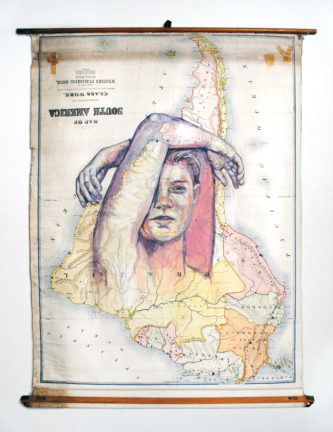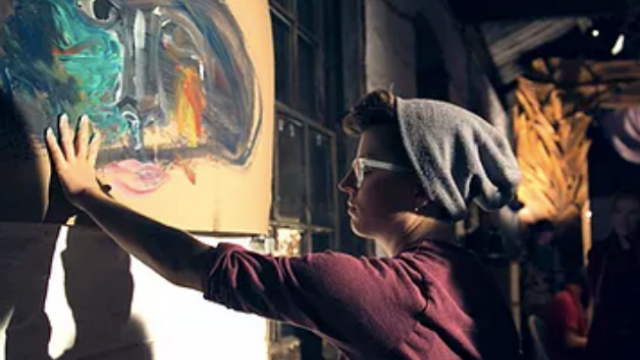
We are continuing our popular series on Quaker artists and feature Lehigh Valley member Joey Hartmann-Dow. Many Friends know Joey from her work on ‘Seeks’ an FCNL comic book on climate issues published two years ago. Others know Joey from Young Adult Friends or the ever-popular Badass Women Calendars that brighten our walls each year.
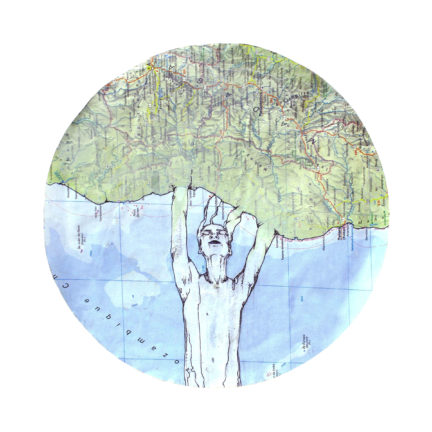
Growing up in Lehigh Valley Meeting, and growing up as an artist, were those two things connected? If connected – were they intertwined or two distinct threads you’ve had to weave together?
My artist thread was absolutely strengthened by my Quaker thread. The support to be creative and the influence of Quaker values both led me to the energy of my work and the confidence to pursue it. Sometimes it feels funny to be a Quaker and an individual whose livelihood depends on capitalism… but it was actually a member of my Meeting who is a small business owner, who gave me a small piece of advice to help me take the step, and in truth, I wish more business owners shared Quaker values.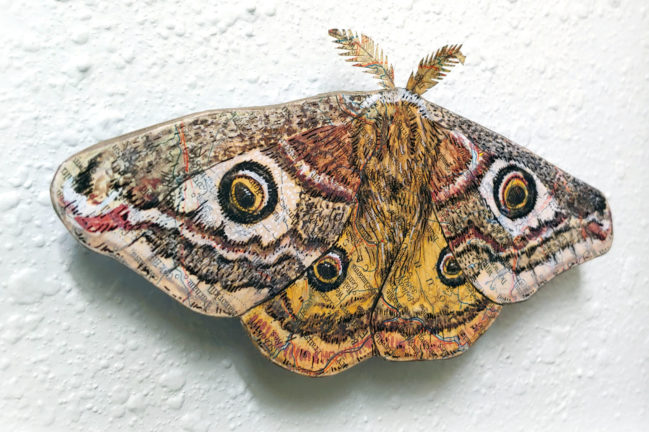
What was the first major art project you felt exceptionally happy about? Did that help launch your path as an artist?
It’s funny, having been committed to being a professional artist for 8 years, I look back on things differently. I remember thinking early on, “this is not my best work,” and feeling frustrated. But I knew I would never make my best work without making some work I didn’t like along the way. And that’s a nice life lesson as well; of course, we are constantly growing, and something I make today might feel different to me in a few years.
The last thing that I made in college, which was for my senior thesis show, was a series called “Countries Anonymous.” I took the shapes of countries that were indexed as the most vulnerable to climate change, and I made them into creatures (like you might with the shape of a cloud). The work ended up being rushed, and looking back on it now, I know it could have been better presented, but I’m still really happy with the concept, and I would say it probably did “launch my path” as an artist.
You worked with FCNL on a zine that addressed climate change; what was that like? Were there challenges?
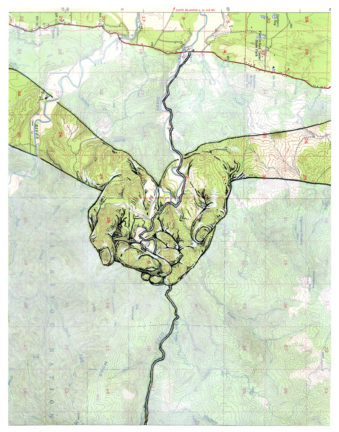 I had a blast working on the Seeks book while I was FCNL’s Friend in Washington. I had never made a comic book before, and the process was very challenging— there were so many parts to it. Obviously, the research, the writing, and the drawing are big parts, but it also needs direction, character and scene design, layout, lettering, and coloring… it definitely gave me an appreciation for the scope of comic book production. The main character was also based on myself, so there was a little bit of vulnerability in that. I’m happy with how it turned out, and I’m so grateful that FCNL supported the project.
I had a blast working on the Seeks book while I was FCNL’s Friend in Washington. I had never made a comic book before, and the process was very challenging— there were so many parts to it. Obviously, the research, the writing, and the drawing are big parts, but it also needs direction, character and scene design, layout, lettering, and coloring… it definitely gave me an appreciation for the scope of comic book production. The main character was also based on myself, so there was a little bit of vulnerability in that. I’m happy with how it turned out, and I’m so grateful that FCNL supported the project.
Tell us about your new projects. We happen to be fans of your annual “Badass women” calendar, are you doing that again? There was a very beautiful butterfly you drew on a map for the Quakers Got Talent Auction: have you done more work like that?
This calendar for 2021 is my 5th in the project! I have learned so much from it, and it is gratifying both to be able to use the project to support non-profits doing great work but also to hear from folks who truly appreciate it as an educational thing to lift up inspiring women doing work for equality.
I have made a series of butterflies and moths on maps, which are a lot of fun. They are a branch off of my other work with maps, which is very much about making connections between creatures, the earth, and each other. Lately, I’ve really been trying to align my materials with my principles, so I have been exploring making new work with found resources and making my own paints from natural pigments, which has been very cool.
As a Quaker, how do you connect worship with art?
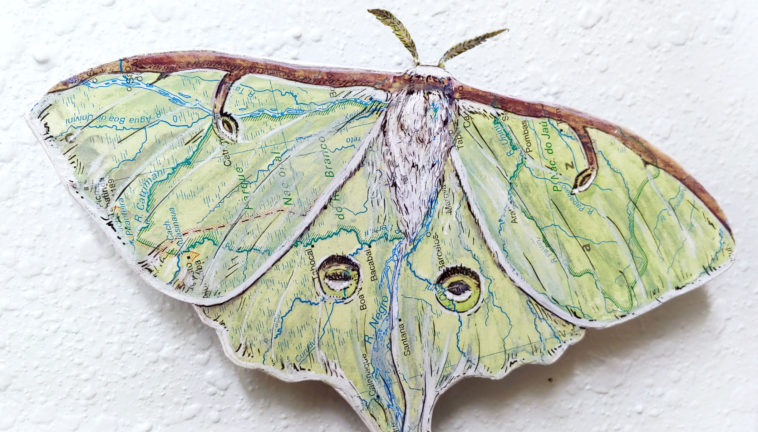 I don’t actually usually connect the two. In quiet listening, I’m trying to calm my mind, and when I’m making work, I have racing thoughts, so that makes me think about what it would be like to have some kind of Meeting for worship for art, that’s really interesting. I definitely connect my Quaker values with the content of my work, but I hadn’t made a connection with worship specifically, although it’s very possible they are related, and I don’t even realize it.
I don’t actually usually connect the two. In quiet listening, I’m trying to calm my mind, and when I’m making work, I have racing thoughts, so that makes me think about what it would be like to have some kind of Meeting for worship for art, that’s really interesting. I definitely connect my Quaker values with the content of my work, but I hadn’t made a connection with worship specifically, although it’s very possible they are related, and I don’t even realize it.
You identify as a Queer artist. Can you explain what that means to you and your peers? What does it mean in terms of your work?
I do identify as Queer and I’m sure everyone who does relates to it differently. For me, it feels like a freedom from gender conformity, and an invitation to live with integrity. Societal gender roles have always bugged me and I enjoy challenging them in my life and in my work. It breaks my heart that we’re taught from a young age to “other” each other based on constructs like race and gender. Making connections between any humans or creatures or the earth, without diminishing any of their Light, that’s what I hope to do with my art.
Visit her website: https://www.usandweart.com/
